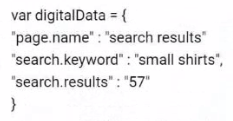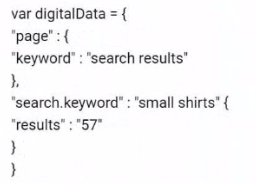At ValidExamDumps, we consistently monitor updates to the Adobe AD0-E207 exam questions by Adobe. Whenever our team identifies changes in the exam questions,exam objectives, exam focus areas or in exam requirements, We immediately update our exam questions for both PDF and online practice exams. This commitment ensures our customers always have access to the most current and accurate questions. By preparing with these actual questions, our customers can successfully pass the Adobe Analytics Architect Master Exam exam on their first attempt without needing additional materials or study guides.
Other certification materials providers often include outdated or removed questions by Adobe in their Adobe AD0-E207 exam. These outdated questions lead to customers failing their Adobe Analytics Architect Master Exam exam. In contrast, we ensure our questions bank includes only precise and up-to-date questions, guaranteeing their presence in your actual exam. Our main priority is your success in the Adobe AD0-E207 exam, not profiting from selling obsolete exam questions in PDF or Online Practice Test.
A new business requirement is submitted to start capturing the shipping cost of each order. After updating the product string on the confirmation page to collect the shipping cost in event1 00, no results show up for this event in Adobe Analytics.
s.products = ";car stereo;1;820;event100:123=23
Which code change should be made?
The issue in the original code lies in the incorrect placement of the event syntax. In Adobe Analytics, when defining events in the product string, the correct format must be followed to ensure the event is captured properly. Specifically, there needs to be a double semicolon (;;) before the event definition.
The corrected code s.products = ';car stereo;1 ;820;;event100=23' ensures that the event is recognized correctly by Adobe Analytics.
A company has a website with many forms.
The company wants the ability to report on:
* Form errors per visit
* Form errors per form
* Successful form submissions
Which three variables should be used to meet these requirements? (Choose three.)
Business Requirement: The company wants to track successful and unsuccessful form submissions and identify the types of forms being submitted.
Variables and Metrics Needed:
Event for 'Forms Submitted with Errors': Captures instances where forms are submitted but contain errors.
eVar for 'Form Type': Identifies the type of form being submitted, which is crucial for analyzing different form performance.
Event for 'Forms Submitted Successfully': Captures instances where forms are successfully submitted.
Explanation:
Event for 'Forms Submitted with Errors': Essential for understanding and improving form completion processes by identifying where users encounter issues.
eVar for 'Form Type': Provides detailed breakdowns of form performance by type, aiding in targeted improvements.
Event for 'Forms Submitted Successfully': Measures the completion rate of forms, which is critical for business metrics.
Verification: According to Adobe Analytics best practices, using specific events for tracking successful and error submissions alongside eVars for categorization provides comprehensive insights (Adobe Analytics Implementation Guide).
A company wants to report on the internal search keywords and their contribution to the revenue.
The Architect instructs the developer to create the digitalData.search.keyword'' data object in the data layer so it can be
mapped to eVarl.
Which syntax should the Architect recommend?
A)

B)

C)

D)

Business Requirement: The company needs to report on internal search keywords and their contribution to revenue by creating the digitalData.search.keyword data object in the data layer.
Recommended Syntax: The syntax must be correctly structured to allow Adobe Analytics to map the data object to eVar1 efficiently.
Explanation:
What are three uses of Processing Rules? (Choose three.)
Processing Rules in Adobe Analytics are versatile and can be used for various purposes:
Clean up misspelled site sections: Corrects misspelled values in data collection to ensure accurate reporting.
Populate campaign with a query string parameter: Extracts query string parameters and uses them to populate campaign variables.
Copy an eVar into a prop to see pathing: Allows copying values from an eVar to a prop to enable pathing analysis on that variable.
These rules help maintain data quality and flexibility in reporting.
An Architect needs to update mobile data collection to comply with company and legal guidelines (GDPR, CCPA). The Architect discovers the Android version of their mobile application tracks the latitude, longitude, and iBeacon dat
a. Tracking specific geographic data is now considered out of compliance with company guidelines, and must be updated.
Which call must be removed?
Business Requirement: Ensure compliance with GDPR and CCPA by updating mobile data collection practices.
Tracking Methods:
getGeoCoordinates: Retrieves geographical coordinates but is typically not the method used for tracking purposes.
trackState: Tracks the state of the application and user interaction.
trackAction: Tracks specific user actions within the application.
trackLocation: Explicitly tracks geographic location data, including latitude, longitude, and iBeacon data.
Explanation:
trackLocation: Must be removed to comply with regulations as it directly tracks and transmits geographic location data.
Verification: According to Adobe Mobile Services documentation, removing the trackLocation call ensures compliance with data protection regulations by eliminating the collection of sensitive geographic data (Adobe Mobile SDK Guide).